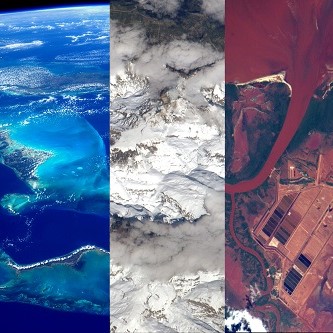How is Chernobyl safe for wildlife now, but this book is still dangerous?
Um, Chernobyl is still extremely radioactive. You probably mean the exclusion zone which is really not that bad, there’s even tourists going there. But it’s still not recommended to live there due to cumulative exposure.
So the site itself is still deadly, but the areas around it are not? Would that be the case for a nuclear attack as well? Like ground zero would stay deadly but the rest of the city would be safe a few decades later? I just realized that I don’t actually know very much about nuclear fallout. How are Hiroshima and Nagasaki safe?
Complex topic. It would depend on the bomb in question. Some are more “dirty” than others.
The clouds of radioactive gases carry radiated dust particles that are carried by winds and settle on the ground, roofs, etc (fallout). That’s why after Chernobyl or the Japanese cities were attacked it was very important which way the wind was pushing the clouds carrying the tiny debris, ash, and dust and how the Chernobyl disaster was detected by other countries in the path.
You probably also want to avoid trying to grow any crops in the area because one way to deal with the radioactive dust is to bury it under the top soil, and buildings that have been closed since Chernobyl that still have the dust trapped inside are still very dangerous.
Edit: the bombs in Japan exploded high above the ground to maximize damage and minimize fallout. The gases were carrying less radiated particles, and mostly dispersed after the initial blast or carried by winds. The gases over Chernobyl kept going until the fires were out.
It’s been a couple of decades since I watched the documentary so maybe my memory is betraying me but from what I remember the bombs dropped on Japan didn’t touch the ground. They detonated in the air so there technically isn’t a ground zero.
Generally the really nasty gamma emitting fission products lose their nastiness after a couple of months. Their half lives tend to be counted in hours.
They overturned the dirt in the exclusion zone to bury the fallout so that it’s less of a possibility for it to move around. You wouldn’t want to live there, drink from the groundwater, farm there, etc.
Interesting video on Chernobyl and the people still living in the exclusion zone.
https://www.bbc.com/travel/article/20140116-cooking-in-the-danger-zone-chernobyl
I can’t watch the video via the BBC site but it exists elsewhere.
Thanks!
they didn’t say the book is dangerous, they said it’s radioactive
It isn’t “safe” it’s “safe enough” for limited visits to the exclusion zone and VERY limited visits to the sarcophagus that enclosed the old reactor
So what about the animals around there? Are they all dying from radiation poisoning, or turning into Godzilla, or something?
I was gonna answer that most animals don’t live as long and reproduce faster than humans (so populations survive despite increased cancer risk), but when I looked into it I found a deep rabbit hole. In the case of wolves, I’m sure plenty died early on, because the populations present appear to have some genetic immune adaptations that protect them from cancer. I know other species (like frogs) have dark skin because the melenin increased the survival rate of the darker frogs at the time of the accident. So that is to say probably a lot of wildlife died, and that natural selection lead to some critters that are pretty resistant to radiation.
Wow, that’s actually really cool! Not the dying part, but the adapting part. Thanks for sharing!
Chernobyl was made into a TV show while this book appears to be just a book.
So if we make a movie about this book then it can be handled again? Or does it have to be a full 10 hour show?
fun fact: the other three reactors in Chernobyl were put in operation again AFTER reactor 4 blew up
I believe the last one for 14 additional yearshow safe that was is another question though
I think we can safely say with hindsight, it was very safe. Reactor 4 was caused by a fluke of circumstances and a few mistakes. It was otherwise a very safe reactor. Once they understood the failure they are able to adjust protocol to ensure it doesn’t happen again. It made the other reactors even safer.
The same thing happened with three mile island. Unit 1 safely continued operation until 2019, which only stopped because of financial pressures (competition with Methane), not because anything was wrong.
I mean, RBMK based reactors are still in use today, no?
Different radioactive materials have different half-life periods.
Chernobyl isn’t safe safe, it’s just safe enough for wildlife to survive there, possibly with lowered life span and quality of life.
Also, there’s a decent danger of radioactive dust coming off the book if it’s handled. It may not be that radioactive, but if it clings to you, or you breathe it in, it will do considerably more damage than if it was all one solid rock that made geiger counters click.
The wildlife is just left alone, I wouldn’t call it safe from radiation, they still have a higher incidence of mutations than animals outside the contaminated zones. It’s just that some radiation and no humans, happens to be better for wildlife than no radiation and lots of humans.
It looks like they were super lazy and took the half life of the longest lived isotope of radium (226 — approx 1600 years) minus its age (approx 100 years) to get to 1,500 years.
I’m guessing we don’t know the particulars of what radium isotope Curie was working with?
There’s a couple of YouTube videos where urban explorers re-visited Chernobyl many years after the accident. They explored the area around the plant and visited the hospital where Russian firefighters were taken after they were exposed to debris from the reactor’s core.
Their clothing was seriously contaminated and was removed and stored in a room in the hospital’s basement. The explorers visited the basement where the clothing is still stored today. They didn’t get close to the clothing because it is still contaminated. As in, “not safe to enter the room” contaminated.
It should be noted that big chunks of radioactive materials are generally safe same with just generally high radiation under a certain threshold, we are illuminated by a big ball of fuck you radiation after all. The problem is radioactive dust and particulates, once its in your body you are fucked and its pretty random on what amount will kill you. This is what happened to those Russian dumbasses who dug trenches around Chernobyl, they breathed in radioactive dust and it wreaked havoc on their bodies. This is also one of the main reasons you wear gas masks around such things.
If it’s an alpha or beta emitter, sure, you’re probably fine standing near it. But if you find yourself next to a chunk of a gamma emitter, you should probably run away very quickly
But I want to be big green and smash.
“Just remember, don’t put your tubes in your pantaloon”
Is there a way to de-radioactivize it faster?
Content below provided by ChatGPT.
Edit: Is the below information incorrect or y’all just have a stick up your asses over LLMs?
Marie Curie’s notebooks are still radioactive due to the presence of radium-226, which has a half-life of about 1,600 years. To make her notebook non-radioactive or significantly reduce its radioactivity, the following methods could theoretically be used:
-
Chemical Removal or Neutralization:
- Chemical Extraction: This involves using chemicals to extract the radioactive elements from the paper. This process would be complex and potentially damage the paper.
- Neutralization: This would involve converting the radioactive materials into stable, non-radioactive elements. However, there are no practical methods currently available for neutralizing radium in situ.
-
Encapsulation:
- Instead of making the notebook non-radioactive, it could be permanently encapsulated in a material that blocks radiation, such as lead-lined containers or specialized glass. This wouldn’t make the notebook safe to handle without protection, but it would contain the radiation.
-
Decay Time:
- Given the long half-life of radium-226, waiting for the radioactivity to decay to safe levels is impractical since it would take thousands of years for the radioactivity to diminish significantly.
-
Advanced Radiation Mitigation Techniques:
- There are experimental methods like targeted transmutation, where the radioactive elements are bombarded with particles to induce decay into stable elements. This is highly theoretical and not feasible with current technology for something as delicate as a notebook.
Practically, due to the historical and scientific value of Marie Curie’s notebooks, they are preserved and stored in controlled environments where they can be studied safely using appropriate radiation protection measures. The best approach currently is to handle and store them with care rather than attempting to decontaminate them.
You should preface a comment if you used AI to write it
You’re right. I was being lazy, but I will edit to let people know.
There should be a rule to label ai output in posts and comments. Maybe spoiler tag the comments too, de-clutter a little bit.
Yes, everyone with some common sense hate LLM generated texts.
Care to elaborate?
I wonder what the issue is? Is it that is can provide wrong information?
Is it that you don’t see any legitimate use cases for them? As I work as a software developer and CoPilot in Visual Studio has saved us countless hours in writing boiler plate stuff and just solving problems in general.
Furthermore, the owner has created some pretty amazing tooling utilising LLMs and again, it saves us countless hours in the boring things. Like now if I make a new model in C#. We have something watching the code and that will use LLMs and some custom methods to scaffold changes to about 10-15 files and also create UI components in the client ready for us. All we need to do is update the schema doc for graphQL, run the migrations and update the DB. Then we are good to go. Saves about an hour every time a model is added or changed.
-
🎶Welcome to the new age, to the new age , la la la la🎵🎶
If you think that’s bad, just look up what happened to her husband.












